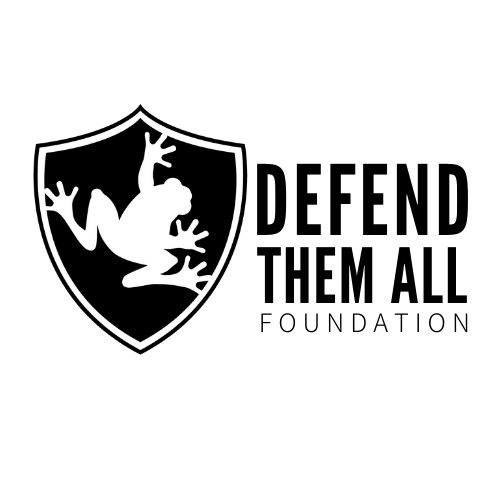Species Spotlight: Cownose Ray
Common name: Cowfish, Cownose Ray, Cownose Stingray, Cow-nosed Ray, Eagle Ray, Flap Ray, Flapnose Ray, Java Cownose Eagle Ray, Javanese Cowray.
Family: Rhinopteridae
Range: Cownose rays can be found in shallow marine and brackish coastal waters globally in the Western Atlantic, Gulf of Mexico, Eastern Atlantic, Indian Ocean, Western Pacific, and Eastern Central and Southeast Pacific.
Conservation status: The IUCN Red List of Threatened Species has classified species of cownose rays at different risk categories:
INFORMATION
Members of the Rhinopteridae family commonly known as “Cownose Rays” are medium to large (up to 2 meters wide) cartilaginous fish species found in shallow marine and brackish coastal waters of the Atlantic Ocean, Pacific Ocean, and Indo-Pacific (Kittle, 2022; Robertson, 2015). They are known to migrate long distances in large schools as big as 10,000 rays in association with breeding periods.
Cownose Rays feed primarily on invertebrates such as clams, snails, lobsters, oysters, and crabs by using plate-like teeth to crush their prey (Kittle, 2022). In foraging for food, cownose rays flap their fins to stir and restructure seabed sediments while eliminating particles through their gills: a process known as bioturbation, providing smaller predators with access to otherwise buried invertebrates (Suchanek & Colin 1986, at 29). This process increases foraging opportunities for smaller fishes and is considered an essential ecosystem function.
THREATS AND CONSERVATION
Unsustainable Exploitation
Overfishing (both targeted and bycatch) is the primary cause of decline in cownose ray species globally, and in the Indo-Pacific region in particular. For example, a 50–79% reduction in the Javanese Cownose Ray over the past three generation lengths (44 years) is suspected due to relentless overfishing practices (Sherman, C.S. et. al., 2021). A substantial decrease in fish stocks (as much as 70% in some areas between 1960s-1990s) have also been observed in the region despite advancements in fishing technology and vessel size, hinting at the extent of the population reduction. Consumed locally and traded internationally, demand for seafood, including the Javannese Cownose Ray, is ever increasing and expected to continue unless significant conservation measures are adopted.
Development and climate change
Because cownose rays live in shallow waters, their habitat is inherently more vulnerable to the impacts of commercial and urban development (Sherman, C.S. et. al., 2021). For example, large coastal areas in Indonesia and Malaysia have been lost to land conversion for urban development, shrimp farms, and agriculture. The increasing demand for seafood is likely to worsen this issue. According to the IUCN, the level of impact from commercial and urban development at 5, one below that of overfishing (IUCN Threats Classification Scheme).
What can/should be done
Raising awareness about the unique characteristics and role of cownose rays in the ecosystem is a critical step to preventing further decline of global populations. For example, a targeted educational campaign in Indonesia where the Javaneese Cownose Ray is targeted for consumption may deter consumers and reduce overfishing practices (Sherman, C.S. et. al., 2021).
Another meaningful step would be to conduct research on members of the Rhinopteridae family as current published data is limited. Learning more about these species’ ranges, behaviors, and biological characteristics, such as suitable conditions for living, breeding, and other needs may more effectively direct efforts to save them. Developing action recovery plans and monitoring schemes would also benefit these species.
More sustainable fishing practices must be urgently and aggressively adopted if cownose rays and other nearshore marine species are to persist. There are multiple ways to achieve this, including gear restrictions and limited permitting for areas where population trends are in decline. Finally, listing members of the Rhinopteridae family on the CITES Trade Database is essential as commercial trade at the international level is known to occur, and is a substantial factor in these species’ dramatic decline.
REFERENCES
IUCN, “Threats Classification Scheme Version 3.2”. https://www.iucnredlist.org/resources/threat-classification-scheme
Kittle, Kimberly, “Discover Fishes: Rhinoptera bonasus,” Florida Museum of Natural History, 2022. https://www.floridamuseum.ufl.edu/discover-fish/species-profiles/rhinoptera-bonasus/
Movement of Life, “Cownose Ray: Rhinoptera bonasus,” Smithsonian. https://movementoflife.si.edu/species/cownose-ray/
O'Shea, Owen & Thums, Michele & van Keulen, Mike & Meekan, Mark. (2011). “Bioturbation by stingrays at Ningaloo Reef, Western Australia. Marine and Freshwater Research.” https://www.researchgate.net/publication/233815349_Bioturbation_by_stingrays_at_Ningaloo_Reef_Western_Australia#:~:text=Stingrays%20are%20an%20important%20part,through%20their%20foraging%20and%20predation/
Robertson, D. Ross, “Family Rhinoptera: Cownose Ray,” Smithsonian Tropical Research Institute, 2015. https://biogeodb.stri.si.edu/caribbean/en/thefishes/taxon/4643
Sherman, C.S., Bin Ali, A., Bineesh, K.K., Derrick, D., Dharmadi, Fahmi, Fernando, D., Haque, A.B., Maung, A., Seyha, L., Tanay, D., Utzurrum, J.A.T., Vo, V.Q. & Yuneni, R.R. 2021. Rhinoptera javanica. The IUCN Red List of Threatened Species 2021: e.T60129A124442197.https://dx.doi.org/10.2305/IUCN.UK.2021-2.RLTS.T60129A124442197.en.





